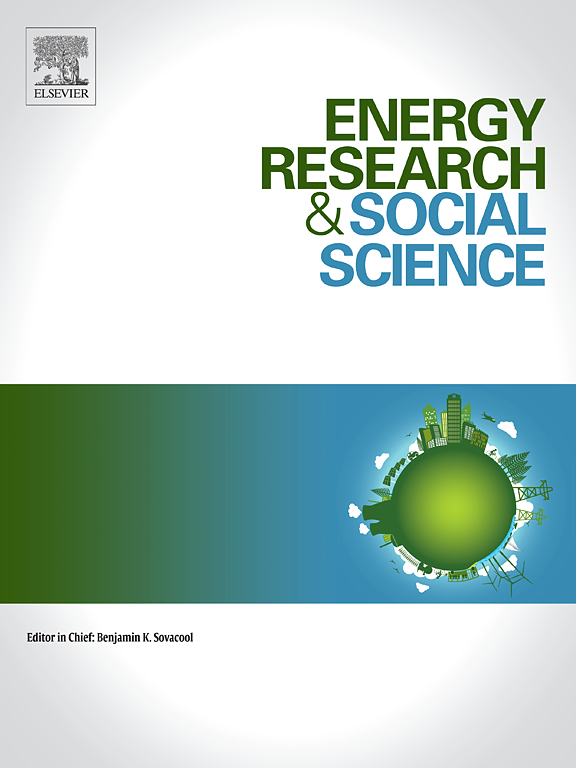金属制造业生产力中的碳排放:铝冶炼的全球分析
IF 7.4
2区 经济学
Q1 ENVIRONMENTAL STUDIES
引用次数: 0
摘要
铝工业每年产生超过10亿吨的二氧化碳(CO2),对全球排放做出了重大贡献。为了成为可持续经济的一部分,这个碳密集型行业需要提高生产率以减少碳足迹。鉴于铝在各种消费品和工业产品中的普遍使用及其生产能源的高需求,评估生产力的碳成分可产生重大的气候缓解影响。本文考察了铝冶炼部门碳排放的成本效率。它指的是冶炼厂在给定的产出水平下,通过最优地使用投入资源而使成本最小化的点。具体而言,它利用2004年至2020年独特的全球冶炼厂水平数据,调查了影响铝行业生产率的能源特定技术差距。这是第一个比较冶炼厂使用不同能源和技术的成本效率的研究。它估计了Meta-Technology-Ratio (MTR),它衡量了冶炼厂与前沿技术的接近程度,代表了在使用现有最佳技术的同时保持环境效率。该分析强调了通过现代化和提高效率来缩小煤炭和天然气冶炼厂技术差距的潜力,同时强调可再生能源和核能是与最高效、最尖端的铝冶炼技术保持一致的主要选择。本文章由计算机程序翻译,如有差异,请以英文原文为准。
Carbon emissions in metal manufacturing productivity: A global analysis of aluminium smelting
The aluminium industry generates over a billion tonnes of carbon dioxide (CO2) annually, contributing to global emissions significantly. To become a part of the sustainable economy, this carbon-intensive industry needs improved productivity to reduce its carbon footprint. Given the ubiquity of aluminium usage in a wide array of consumer and industrial products and its high production energy requirements, assessing the carbon component of productivity can have significant climate mitigation impacts. This paper examines the cost efficiency of carbon emissions embedded in the aluminium smelting sector. It refers to the point at which a smelter minimizes its cost for a given output level by optimally using input resources. Specifically, it investigates the energy-specific technology gaps that affect aluminium sector productivity, utilizing unique global smelter-level data from 2004 to 2020. This is the first study comparing smelters' cost efficiency using different energy sources and technologies. It estimates the Meta-Technology-Ratio (MTR), which measures how close a smelter is to the frontier, representing the use of the best available technology while being environmentally efficient. The analysis underscores the potential for reducing the technology gap in coal- and gas-powered smelters through modernization and efficiency improvements while highlighting renewables and nuclear power as leading options for aligning with the most efficient, cutting-edge technologies in aluminium smelting.
求助全文
通过发布文献求助,成功后即可免费获取论文全文。
去求助
来源期刊

Energy Research & Social Science
ENVIRONMENTAL STUDIES-
CiteScore
14.00
自引率
16.40%
发文量
441
审稿时长
55 days
期刊介绍:
Energy Research & Social Science (ERSS) is a peer-reviewed international journal that publishes original research and review articles examining the relationship between energy systems and society. ERSS covers a range of topics revolving around the intersection of energy technologies, fuels, and resources on one side and social processes and influences - including communities of energy users, people affected by energy production, social institutions, customs, traditions, behaviors, and policies - on the other. Put another way, ERSS investigates the social system surrounding energy technology and hardware. ERSS is relevant for energy practitioners, researchers interested in the social aspects of energy production or use, and policymakers.
Energy Research & Social Science (ERSS) provides an interdisciplinary forum to discuss how social and technical issues related to energy production and consumption interact. Energy production, distribution, and consumption all have both technical and human components, and the latter involves the human causes and consequences of energy-related activities and processes as well as social structures that shape how people interact with energy systems. Energy analysis, therefore, needs to look beyond the dimensions of technology and economics to include these social and human elements.
 求助内容:
求助内容: 应助结果提醒方式:
应助结果提醒方式:


